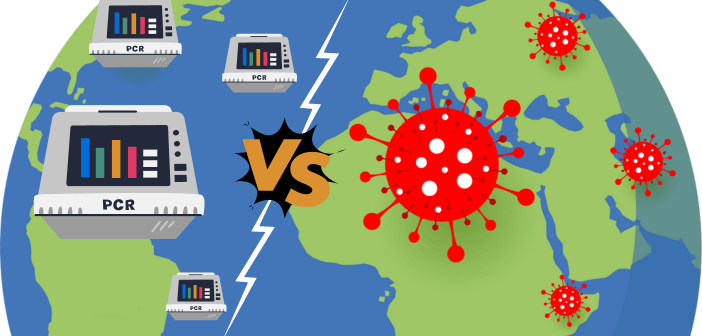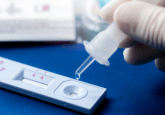The power of PCR: fighting the new mpox outbreak with two new assays

As the WHO declared mpox as a public health emergency of international concern, Seegene has developed two new mpox PCR test assays for research use only.
The WHO has called an mpox health emergency declaration, and biotech company Seegene (Seoul, South Korea) has answered. The company has announced the development of two new mpox PCR test assays for research use only (RUO): Novaplex MPXV/OPXV Assay (RUO) and HSV-1&2/VZV/MPXV Assay (RUO).
What is mpox? How infectious is it? Should we be worried?
Let’s start with the basics. Mpox is a disease caused by the monkeypox virus, with common symptoms including a skin rash or lesions, fever, sore throat, headaches and muscle aches. It can spread in a few ways: through close personal contact (such as touching, sex and breathing within close proximity of one another), contaminated objects or contact with infected animals [1].
There are two clades of mpox: the more severe and transmissible clade 1 and the less infectious and virulent clade 2. While the fatality rate for clade 2 is less than 1%, clade 1 can kill up to 10% of those infected [2]. The culprit for the current outbreak is clade 1, prompting major concerns for public health.
You may also be interested in:
- Paper strip test using CRISPR and SHINE technology has been developed for rapid influenza diagnosis
- FAIRY: a rapid, cell-free assay for determining virus infectivity
- Quantifying AAV viral titers: an examination of qPCR and dPCR technologies across applications
On August 14 2024, mpox was officially declared a Public Health Emergency of International Concern (PHEIC). The primary reason for the emergency declaration is the significant increase in mpox cases and its spread in non-endemic countries. This concern is further amplified by the emergence and rapid spread of a new virus strain, clade 1b, owing to its higher transmissibility and potential for more serious clinical outcomes. As a result, health authorities are racing to contain the virus amid challenges such as limited vaccine availability, insufficient testing and the need to coordinate international action [3]
This is where Seegene comes in. Their Novaplex MPXV/OPXV Assay identifies orthopoxviruses, including both clade 1 and clade 2 of the mpox virus, facilitating early detection and differentiation of the virus, which can have an incubation period of up to 21 days.
Their Novaplex HSV-1&2/VZV/MPXV Assay goes a step further, detecting multiple viruses, including clades 1 and 2 of mpox, and can distinguish between clade 2, aiding researchers in pinpointing specific virus strains.
The assay also detects type 1 and type 2 herpes simplex virus and varicella-zoster virus, both of which can be confused with mpox as they display similar symptoms.
Back in 2022 when another PHEIC for clade 2 of the mpox virus was declared, Seegene developed Novaplex MPXV (RUO) using its Seegene Digitalized Development System (SGDDS) – an automated system for rapid assay design and development.
As in 2022, Seegene hopes to help control the spread of mpox and support global health responses during critical public health threats by sharing their PCR technology and SGDDS with leading companies around the world.





